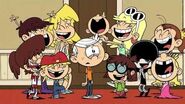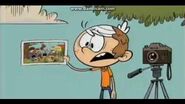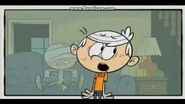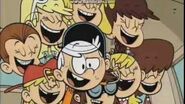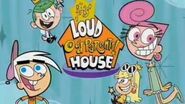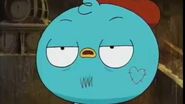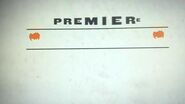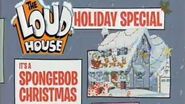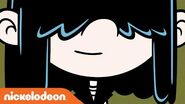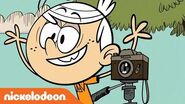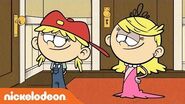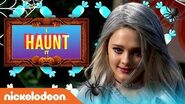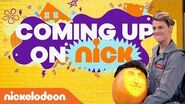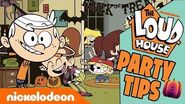mNo edit summary Tag: sourceedit |
(red link) |
||
| (45 intermediate revisions by 18 users not shown) | |||
| Line 1: | Line 1: | ||
{{BG/General}} |
{{BG/General}} |
||
| − | [[File:Nick 2009.png|thumb|The |
+ | [[File:Nick 2009.png|thumb|The current Nickelodeon logo, used since September 29, 2009 in the U.S., and 2010 internationally]] |
| + | '''Nickelodeon''', also known as '''Nick''' for short, is an American children's cable television channel on which ''[[The Loud House]]'' airs. Owned by {{W|ViacomCBS}}, and operated under its Nickelodeon Kids and Family Group, it originally began broadcasting as '''The Pinwheel Network''' in 1977 before relaunching with its current name in 1979. |
||
| + | ==Nick 2== |
||
| − | '''Nickelodeon''' also known as '''Nick''' (previously known as '''Pinwheel''' from 1977 until 1979) is an American children's cable television channel and the network for [[The Loud House]]. |
||
| + | [[File:17DD4737-B33A-4C7F-9CCD-BDFEC88B6DE6.png|thumb|The Nick 2 logo. As of 2010.]] |
||
| + | Nick 2 was the off-air brand for a secondary timeshift channel of Nickelodeon formerly available on the high-tier packages exclusively on cable providers as a compliment to the main Nickelodeon feed, repackaging Nickelodeon's Eastern and Pacific Time Zone feeds for the appropriate timezone – the Pacific feed was distributed to the Eastern and Central Time Zones, and the Eastern feed was distributed to the Pacific and Mountain Time Zones – resulting in the difference in local airtimes for a particular program between two geographic locations being three hours at most, allowing viewers a second chance to watch a program after its initial airing on the Eastern Time Zone feed or to watch the show ahead of its airing on the Pacific Time Zone feed of the main channel (for example, the Nick at Nite block would respectively start at 11:00 p.m. Eastern on Nick 2 Pacific or 5:00 p.m. Pacific weeknights on Nick 2 Eastern). Nick 2 never broadcast in high definition. The service existed from around 2000 until November 2018, launching as Nick TOO. |
||
| + | The timeshift channel was originally offered as part of the MTV Networks Digital Suite, a slate of channels exclusive to high-tier cable packages (many of the networks also earned satellite carriage over time), and was the only American example of two feeds of a non-premium service being provided to cable and IPTV providers. A Nick TOO logo was used on the channel until 2004, when MTV Networks decided to stop using customized branding on the feed (a logo for Nick 2 was only used for identification purposes on electronic program guides as a placeholder image); most television listings thus showed the additional channel under the brandings "Nickelodeon Pacific/NICKP" or "Nickelodeon Eastern/NICKE". |
||
| ⚫ | |||
| + | On another note, DirecTV and Dish Network also offer both Nickelodeon feeds, though they carry both time zone feeds of most of the children's networks that the providers offer by default. |
||
| − | ===Pinwheel (1977-1979)=== |
||
| + | Viacom Media Networks discontinued the Nick 2 digital cable service on November 22, 2018, likely due to video on demand options making timeshift channels for the most part superfluous. Both timezone feeds continue to be offered on satellite providers, unbranded. |
||
| − | Nickelodeon was originally launched as Pinwheel on December 1, 1977 and was a local station on Warner Cable's Qube station that ran for 6 hours a day. Shows included ''Video Comicbook'', ''Pop Clips'', and ''Pinwheel''. Pinwheel went national in 1979 thus Nickelodeon has declared that 1979 is the network's official launch year. During its broadcast day, it would air shows such as the long running ''Pinwheel'' along with other TV shows such as ''Video Comic Book'', '''America Goes Bananaz''', ''Nickel Flicks'' and ''By the Way''. In 1980, '''Geraldine Laybourne''' joined Nickelodeon's production team. She would become President of Nickelodeon in 1984. |
||
| + | ==Videos== |
||
| − | ===Relaunch as Nickelodeon (1979-1990)=== |
||
| + | <gallery> |
||
| + | The Loud House Inside The Loud House w Creator Chris Savino Nick |
||
| + | The Loud House - Original Promo |
||
| + | 'The Loud House' - "Picture Perfect" Sneak Peek Commercial |
||
| + | 'The Loud House' - "Heavy Meddle" Sneak Peek Commercial |
||
| + | Every Weekday ALL New 'ALVINNN!!!' and More 'The Loud House' Official Promo |
||
| + | The Fairly Loud OddParents House NEW 'The Loud House' & 'The Fairly OddParents' Official Promo |
||
| + | 'The Loud House' Brand New Episodes Starting Monday September 19 Official Promo |
||
| + | 'The Loud House' and Premiere Week of 'Harvey Beaks' Back to Back ALL Week Long Official Promo |
||
| + | The Loud House - Halloween Special |
||
| + | The Loud House Holiday Special "11 Louds a Leapin'" - Official Promo |
||
| + | The Loud House Lucy's Best Lines Nick |
||
| + | The Loud House Leni's Best Lines Nick |
||
| + | The Loud House! How to Draw Lincoln Loud Nick |
||
| + | The Loud House How to Draw Lola & Lana Loud Nick |
||
| + | EXCLUSIVE Sneak Peeks of Henry Danger, Rise of the TMNT & More! 👀 ComingUpOnNick |
||
| + | ‘I Haunt it That Way’ Backstreet Boys Halloween Remix w Henry Danger, Lizzy Greene & More 😱 Nick |
||
| + | Nick Stars Halloween Trivia 🎃 Ft. JoJo Siwa, Jace Norman & More! KnowYourNick |
||
| + | Top 13 Moments in 'Tricked!' The Loud House Halloween Special 👻 Nick |
||
| + | FIRST LOOK at Brand New Episodes of Henry Danger, Loud House & More! ComingUpOnNick |
||
| + | How to Throw a Halloween Party 🦇 The Loud House Party Guide Nick |
||
| + | The Loud House 🆚 The Casagrandes Family Quiz! Which Fam is Yours? FunniestFridayEver |
||
| + | </gallery> |
||
| − | Pinwheel was relaunched as '''Nickelodeon: the First Network for Kids''' in 1981. It extended its hours from 8AM (EST) to 8PM (EST) by turning its channel over to the '''Alpha Repertory Television Service'''(ARTS) and later, for about a year, '''A&E Network'''. At one point the channel just went to a test screen after a sign-off. Its original logo was a silver pinball with the Nickelodeon title in front in multicolor. Nickelodeon's first popular series was ''You Can't Do That On Television'', a Canadian sketch comedy that made its American debut on Nickelodeon in 1981. |
||
| − | |||
| − | ====Beginning Of The Slime==== |
||
| − | |||
| − | After a while the network was known for its iconic green slime, originally featured in ''You Can't Do That On Television''. The green slime was then adopted by the station as a primary feature of many of its shows. In the early years, other shows such as '''Livewire''', '''Standby: Lights, Camera, Action''', '''The Third Eye''' and '''Mr. Wizard's World''' were part of the regular Nickelodeon time slots. |
||
| − | |||
| − | ====The Fall, The Rise Again, And The New Logo Of Nickelodeon==== |
||
| − | |||
| − | The channel struggled at first, having lost $40 million by 1984 and finishing dead last among cable channels. After firing the staff, MTV Networks president '''Bob Pittman''' turned to '''Fred Seibert''' and '''Alan Goodman''', who created MTV's iconic IDs a few years earlier, to reverse Nickelodeon's fortunes. Seibert and Goodman's company, Fred / Alan, teamed up with '''Tom Corey''' and '''Scott Nash''' to replace the "Pinball" logo with the "orange splat" logo that would be used in hundreds of different variations for the next quarter century. Fred/Alan also enlisted the help of animators, writers, producers and doo-wop group '''The Jive Five''' to create new idents for the channel. Within six months of the re-branding, Nickelodeon went from worst to first and has stayed there for 25 years. In 1985, after ARTS dropped its partnership with Nickelodeon, Nick added a late-night new block called '''Nick at Nite'''. In 1988, Nick aired the first annual '''Nickelodeon Kids' Choice Awards'''(previously known as ''The Big Ballot'') and introduced '''Nick Jr.''', an educational block for younger children.Who thinks what it looks like? |
||
| − | |||
| − | ===Success in the 90s and 2000s (1990-2009)=== |
||
| − | |||
| − | By October 1990, Nickelodeon was seen in 52 million homes across the United States. In 1990, Nickelodeon opened '''Nickelodeon Studios''', a television studio, in Orlando, Florida at '''Universal Studios Florida''' and entered into a multimillion-dollar joint marketing agreement with international restaurant chain '''Pizza Hut''', which involved launching '''Nickelodeon Magazine''', which was available for free at participating Pizza Hut restaurants. In 1991, for the first time, Nickelodeon developed its first animated series '''Doug''', '''The Ren and Stimpy Show''', and '''Rugrats'''. These series, known as '''Nicktoons''', premiered on August 11, 1991. The network had previously refused to produce weekly animated series due to high cost. The three Nicktoons found success in 1993, while in mid-1993, [[File:Nickelodeon Haystack logo.png|thumb|The Nickelodeon "Haystack" logo used at the end of many 90's Nickelodeon shows and most SpongeBob DVDs until 2007]] Nickelodeon developed its 4th Nicktoon, '''Rocko's Modern Life''', which was also a success along with the three other Nicktoons. Later, Nickelodeon partnered with '''Sony Wonder''' and released top selling video cassettes of the show's programming. By 1994, ''Doug'' ended production, but ''Rocko's Modern Life'', ''The Ren and Stimpy Show'', and ''Rugrats'' were still in production and airing. In mid-1996, Nickelodeon developed two new Nicktoons, '''KaBlam!''' and '''Hey Arnold!''' which would take the place of ''Rocko's Modern Life'' and ''The Ren and Stimpy Show'' since they would both have ended production about that time, but still would air re-runs up until about 2001. ''Rugrats'', on the other hand, was still airing. The show got very popular in 1998, when '''The Rugrats Movie''' came out. The movie grossed more than $100 million in the United States and became the first non-Disney animated movie to ever sale that high. |
||
| − | |||
| − | ====The Continuity of Nick Magazine, All That, and the removing of ''You Can't Do That On Television''==== |
||
| − | |||
| − | In June 1993, Nickelodeon resumed its magazine brand, Nickelodeon Magazine. Nick Magazine ceased production in 2009 with the December issue being the last. In 1993, Nickelodeon removed sketch comedy ''You Can't Do That On Television'' from its schedule after twelve years on and the next year the network had launch its own sketch comedy, '''All that''' but this also ended its production. |
||
| − | |||
| − | ===Re-branding and plans for the future (2009–present)=== |
||
| − | Nickelodeon had announced in February 2009 that Noggin and The N were to be re-branded as Nick Jr. and TeenNick to bring both channels in line with the Nickelodeon brand identity. Nickelodeon later announced in May 2009 that Nick Magazine would be discontinued by the end of the year. In July 2009, Nickelodeon unveiled a new logo for the first time in 25 years on the packaging of Nickelodeon DVDs coming out beginning that month, the Australian service, and that year's Nickelodeon Animation Festival, intending to create a unified look that can better be conveyed across all of MTV Networks' children's channels. |
||
| − | |||
| − | As of September 28, 2009, the new logo is used across Nickelodeon and Nick@Nite, along with the re-branded TeenNick, Nick Jr. and Nicktoons (formerly The N, Noggin and Nicktoons Network, respectively) channels in varying versions customized for brand unification and refreshment purposes; a new logo for Nickelodeon Productions also began being used in end credit tags on all Nickelodeon shows, even on episodes aired before the new logo took effect (end credit tags of programs airing on TeenNick, Nick Jr. and some shows on Nicktoons only use the current Nickelodeon Productions logo and variants for their respective channel's original programming on episodes of series made after the re-brand). New York based creative director / designer Eric Zim re-branded Nickelodeon, creating the new identity, logos, and the look and feel. In addition to creating the new Nickelodeon corporate logo, he created a whole new logo system to represent the company’s entire family of sub-brands (including digital networks Nick Jr., Nicktoons, TeenNick and Nick at Nite). |
||
| − | |||
| − | Though it is mainly a word mark, during the days prior to the 2010 Kids' Choice Awards, the logo bug was given a blimp background to match the award given out at the show; and beginning the week of September 7, 2010 the logo was formed by a splat design (a la the 2006-2009 logo) in the on-screen program bug during new episodes of its original series. The new logo was adopted in the UK on February 15, 2010, in Spain on February 19, 2010, in Asia on March 15, 2010 and in Latin America on April 5, 2010. The "Nickelodeon on ABS-CBN" block on ABS-CBN in the Philippines adopted the re-branded logo on July 26, 2010. On November 2, 2009, a Canadian version of Nickelodeon was launched, in partnership between Viacom and Corus Entertainment (owners of YTV, which has aired Nick shows for several years, and will continue to do so); as a result, versions of Nickelodeon now exist in most of North America. |
||
| − | |||
| − | On May 12, 2010, after an agreement was reached with Haim Saban (who earlier that month had bought back rights to the Power Rangers franchise from The Walt Disney Company), Nickelodeon agreed to air an eighteenth season of the series, and the production resumed in late 2010 for. The new show, Power Rangers Samurai, debuted in 2011; as part of the deal, Nickelodeon also planed to air the existing 700-episode catalog of the series on the Nicktoons cable channel later that year. |
||
| − | |||
| − | On January 1, 2011, Nickelodeon debuted a new original series, House of Anubis. The show, which was based on the series Het Huis Anubis which aired on an international version of Nickelodeon in The Netherlands, became the first original scripted series to be broadcast in a week-daily strip (in a similar format to a soap opera) and the first original series produced by the flagship Nickelodeon in the United States not to be produced in the United States or Canada. Also, it has been noted that the Nickelodeon team might reconstruct Nickelodeon Studios. The logo now has a good sense of graphics. |
||
| ⚫ | |||
{{Companies}} |
{{Companies}} |
||
| − | [[ |
+ | [[de:Nickelodeon]] |
| ⚫ | |||
| ⚫ | |||
| + | [[fr:Nickelodeon]] |
||
| + | [[id:Nickelodeon]] |
||
| + | [[pl:Nickelodeon]] |
||
| + | [[pt-br:Nickelodeon]] |
||
| + | [[ru:Nickelodeon]] |
||
| + | [[tl:Nickelodeon]] |
||
[[Category:Real-life companies]] |
[[Category:Real-life companies]] |
||
| − | [[Category:Networks]] |
+ | [[Category:Channels and Networks]] |
| − | [[Category:Wikipedia Content]] |
||
Revision as of 09:32, 14 February 2020
|
The current Nickelodeon logo, used since September 29, 2009 in the U.S., and 2010 internationally Nickelodeon, also known as Nick for short, is an American children's cable television channel on which The Loud House airs. Owned by ViacomCBS, and operated under its Nickelodeon Kids and Family Group, it originally began broadcasting as The Pinwheel Network in 1977 before relaunching with its current name in 1979. Nick 2The Nick 2 logo. As of 2010. Nick 2 was the off-air brand for a secondary timeshift channel of Nickelodeon formerly available on the high-tier packages exclusively on cable providers as a compliment to the main Nickelodeon feed, repackaging Nickelodeon's Eastern and Pacific Time Zone feeds for the appropriate timezone – the Pacific feed was distributed to the Eastern and Central Time Zones, and the Eastern feed was distributed to the Pacific and Mountain Time Zones – resulting in the difference in local airtimes for a particular program between two geographic locations being three hours at most, allowing viewers a second chance to watch a program after its initial airing on the Eastern Time Zone feed or to watch the show ahead of its airing on the Pacific Time Zone feed of the main channel (for example, the Nick at Nite block would respectively start at 11:00 p.m. Eastern on Nick 2 Pacific or 5:00 p.m. Pacific weeknights on Nick 2 Eastern). Nick 2 never broadcast in high definition. The service existed from around 2000 until November 2018, launching as Nick TOO. The timeshift channel was originally offered as part of the MTV Networks Digital Suite, a slate of channels exclusive to high-tier cable packages (many of the networks also earned satellite carriage over time), and was the only American example of two feeds of a non-premium service being provided to cable and IPTV providers. A Nick TOO logo was used on the channel until 2004, when MTV Networks decided to stop using customized branding on the feed (a logo for Nick 2 was only used for identification purposes on electronic program guides as a placeholder image); most television listings thus showed the additional channel under the brandings "Nickelodeon Pacific/NICKP" or "Nickelodeon Eastern/NICKE". On another note, DirecTV and Dish Network also offer both Nickelodeon feeds, though they carry both time zone feeds of most of the children's networks that the providers offer by default. Viacom Media Networks discontinued the Nick 2 digital cable service on November 22, 2018, likely due to video on demand options making timeshift channels for the most part superfluous. Both timezone feeds continue to be offered on satellite providers, unbranded. Videos
|


